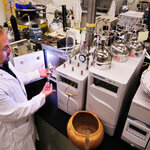Anthropology

You don't need other people to feel less lonely. You just need things you think are people.
Social scientists call this tendency “anthropomorphism.” As a research topic, the phenomenon carries important therapeutic and societal implications, says Nicholas Epley, Assistant Professor of Behavioral Science at the University of Chicago’s Graduate School of Business.
The behaviors described in the paper are not limited to the lonely. Nevertheless, they are well-known to casual observers, from the stereotype of the woman who lives alone surrounded by her menagerie of cats, to the movie portrayal…

Many people pay silly amounts of money to wear a particular logo or a designer brand. A designer outfit doesn't keep you any warmer or dryer than an unbranded one, but functionality is only part of the story. Designer products say something about you – you are a trendy, sexy or sophisticated person. Brands help us to express who we think we are and who we want to be.
Big name brands are an integral part of our lives, says Davide Ravasi, associate professor in the Institute of Strategic Management of Bocconi University, Italy. Whether its Levi jeans, BMW cars or Nokia phones, we know the…

Someone named Scylla waterboarded himself and provided a detailed account of what happened. “Old” self-experimentation, you could say, was doctors doing dangerous things to themselves for a short time to prove some idea that they already believed (e.g., a dentist using laughing gas as an anesthetic); “new” self-experimentation is me doing something perfectly safe for a long time to solve a problem that I have no clue how to solve. What Scylla did is between the two. Short duration, not completely safe, done to find out if waterboarding is torture or not. Scylla had no strong opinion about…

The transition from apes to humans may have been partially triggered by the need to stand on two legs, in order to safely carry heavier babies. This theory of species evolution presented by Lia Amaral from the University of São Paulo in Brazil has just been published online in Naturwissenschaften.
For safety, all nonhuman primates carry their young clinging to their fur from birth, and species survival depends on it. The carrying pattern changes as the infant grows. Newborns are carried clinging to their mother’s stomach, often with additional support.
Months later, infants are carried over…

The belief among some archaeologists that Europeans introduced alcohol to the Indians of the American Southwest may be faulty.
Ancient and modern pot sherds collected by New Mexico state archeologist Glenna Dean, in conjunction with analyses by Sandia National Laboratories researcher Ted Borek, open the possibility that food or beverages made from fermenting corn were consumed by native inhabitants centuries before the Spanish arrived.
Dean, researching through her small business Archeobotanical Services, says, “There’s been an artificial construct among archeologists working in New Mexico…

In our first exciting episode of Who’s Smarter: Chimps, Baboons or Bacteria? The Power of Group IQ ( Part I ) we showed how small-brained baboons can outsmart big-brained chimpanzees and how bacteria can out-innovate chimps, baboons, and you and me. We also visited an evolutionary mystery in the world of a bacterial buddy that's with you every day, the E. coli found in your gut.
In Part II we discussed how E. coli use collective intelligence to do something that the current self-proclaimed sole interpreters of evolution, the neo-Darwinians, say is impossible. E. coli take a step backward in…

Chimpanzees crave roots and tubers even when food is plentiful above ground, according to a new study that raises questions about the relative importance of meat for brain evolution. The study documents a novel use of tools by chimps to dig for tubers and roots in the savanna woodlands of western Tanzania.
The chimps’ eagerness for buried treats offers new insights in an ongoing debate about the role of meat versus potato-like foods in the diet of our hominid ancestors, said first author Adriana Hernandez-Aguilar, who collected the field data for her doctoral research at the University of…

New research is the first to definitively pinpoint when and from where HIV-1 entered the United States and shows that most HIV/AIDS viruses in the U.S. descended from a single common ancestor. The actual ancestral HIV entered the U.S. long before the storied "Patient Zero," senior author Michael Worobey said.
The AIDS virus entered the United States via Haiti, probably arriving in just one person in about 1969, earlier than previously believed, according to new research.
After the virus, HIV-1, entered the U.S., it flourished and spread worldwide.
"Our results show that the strain of…

A new study explores the role of natural enemies, such as predators and parasites, for mixed mating, a reproductive strategy in which hermaphroditic plants and animals reproduce through both self- and cross-fertilization. The findings highlight the possible evolutionary consequences of these interactions.
Mating systems are a complex set of traits that reflect interactions among genetics, population structure, demography, and numerous environmental factors that influence mating success. These traits have profound consequences for genetic variation. Plants and animals display a dramatic range…

Questions about human migration from Asia to the Americas have perplexed anthropologists for decades, but as scenarios about the peopling of the New World come and go, the big questions have remained. Do the ancestors of Native Americans derive from only a small number of “founders” who trekked to the Americas via the Bering land bridge? How did their migration to the New World proceed?
A team of 21 researchers, led by Ripan Malhi, a geneticist in the department of anthropology at the University of Illinois, has a new set of ideas. One is a striking hypothesis that seems to map the peopling…